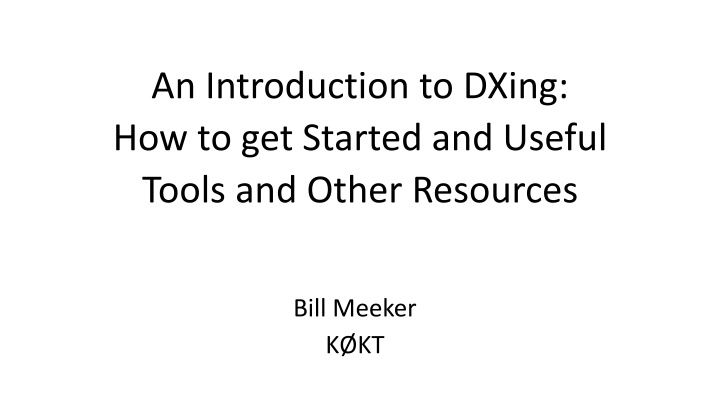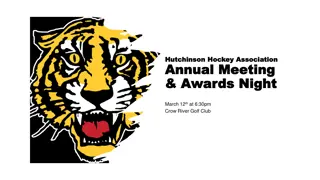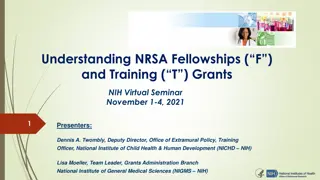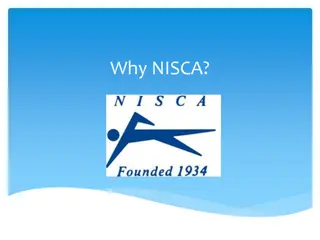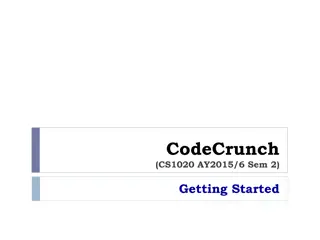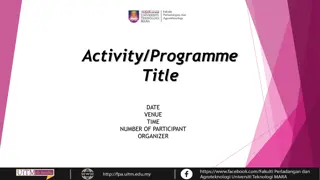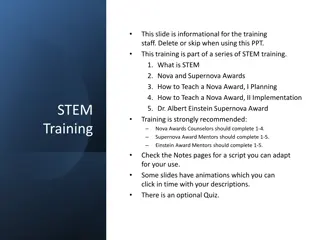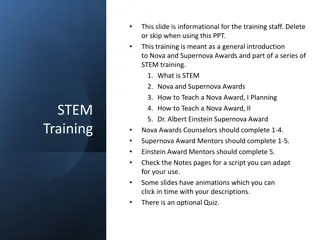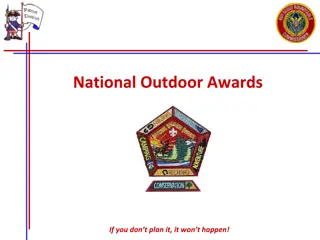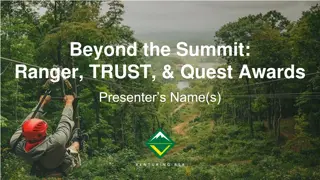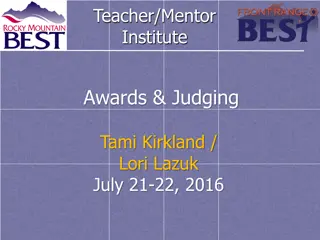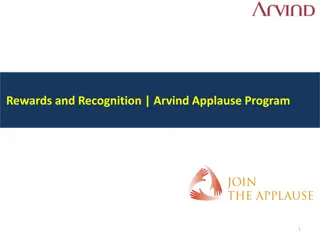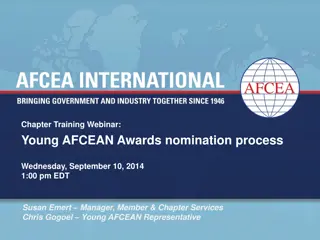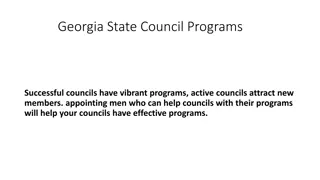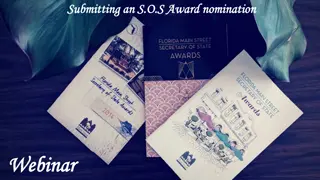A Comprehensive Guide to HF DXing: Getting Started and Achieving Awards
Delve into the world of HF DXing with this extensive guide, covering topics such as DX goals and awards, essential equipment, operator skills, radio propagation, technological tools, and leveraging contests. Gain insights into the history of DXing and learn how to embark on your own DX journey effectively.
Download Presentation

Please find below an Image/Link to download the presentation.
The content on the website is provided AS IS for your information and personal use only. It may not be sold, licensed, or shared on other websites without obtaining consent from the author.If you encounter any issues during the download, it is possible that the publisher has removed the file from their server.
You are allowed to download the files provided on this website for personal or commercial use, subject to the condition that they are used lawfully. All files are the property of their respective owners.
The content on the website is provided AS IS for your information and personal use only. It may not be sold, licensed, or shared on other websites without obtaining consent from the author.
E N D
Presentation Transcript
An Introduction to DXing: How to get Started and Useful Tools and Other Resources Bill Meeker K KT
Overview My goal for the presentation: I would like to generate interest and provide a path for hams to get started in HF DXing. There are special opportunities arising because solar conditions are improving over then next couple of years and the advent of FT8! What is DX? DX goals and awards A little about my DX journey Basic equipment: transceiver and antenna(s) Logs, QSLs, and recordkeeping DXpeditions The importance of operator skills and strategy Radio-frequency propagation Technological tools to support DXing Using DX contests to increase counts Concluding remarks
What is DX? Long distance radio communications Challenging weak-signal communications For HF ham bands (160 to 10 meters) contacts outside the 48 contiguous United States
A Few Popular DX Goals and Awards ARRL DXCC award basic level for working 100 entities. 5BDXCC and 9BDXCC 100 entities on 5 and 9 bands. ARRL WAC ARRL award for working all five continents WAZ CQ Magazine award for confirming all 40 CQ zones and 5BWAZ for confirming all 40 CQ zones on 5 bands ARRL DX Challenge basic level for confirming 1,000 band-entities. The elite level is 3,000 band-entities. DXCC Honor Roll: top ten listing in the number of current entities worked. Need at least 331 confirmed current entities. #1 DXCC Honor Roll worked them all. Confirmed QSOs with all 340 entities. In Story county George NP2N and Chuck WA0ROI.
KKT History (WN2KTO/WB2KTO in NJ before 1975) Late 1950s BCB DXing winter nights in the cold attic 1960-1962 SWL with a Boy Scout homebrew one-tube regenerative receiver that covered 40 and 75/80 meters 1963 Homebrew 6L6 about 5 watts to a vertical (no radials). No QSOs! 1964 25 watts and a vertical (no radials). A few 80-meter QSOs. 1964 25 watts & 40-meter dipole up 20 feet. First real DX on 15 meters! 1965 50 watts & a 3 ele trap triband Yagi at 20 feet 1966-1974 600 watts & a 4 ele 20-meter Yagi at 50 feet and inverted Vs 1975 25 watts & a rain gutter (first apartment in Ames) 1978-1992 800 watts and a 4 ele 20-meter Yagi at 50 feet, vertical with radials, and inverted Vs 2005 1500 watts, 4-ele tribander, 4-ele on 40, and 3-ele vertical array on 80
The Infamous Gotham V-80 Vertical Antenna Verticals are omnidirectional. Verticals radiate equally poorly in all directions. With a proper ground system (radials) verticals are effective DX antennas, especially for the low bands (160, 80 meters).
Basic equipment: Radio (Transceiver) Pre 1960 hams generally has separate transmitters and receivers. Most modern transceivers provide 100 watts output DX possible with QRP Most modern rigs cover 160 to 6 meters (some go up to 2 meters) Two VFOs to allow split operation (better than RIT) Two receivers allow listening to the DX and the pileup simultaneously Panadapter/bandscope The second-hand market may provide economic value for new HFers Linear amplifier for more power (tubes versus solid-state?)
Basic equipment: Antennas For 10-20 meters trap triband Yagis are common, but wires work too. For long DX low angle of radiation is important. Best to have horizontal antennas up one wavelength (e.g., 65 feet for 20 meters). Some advantages for mono-band Yagis (no traps, no element-location compromise) For 80-30 meters dipoles (including inverted V) are most common For DX, verticals are preferred for low bands (80 and 160 meters). Provide low angle radiation (can be important for long distance) Radials are essential Stealth flag pole antennas Non-resonant antennas of various types (e.g., center, off-center, or end-fed) Can be effective as a multi-band antenna Need an antenna tuner. Best if the tuner is close to the antenna or if the antenna is fed with open- wire feeders.
Antenna Restrictions City/County ordinances Common Covenants and Restraints (CCRs) usually created with a subdivision and run with the land (antenna restrictions started appearing in the 1970s) Home-Owner Association (HOA) restrictions Spousal objections
QSL to Confirm Confirm Contacts Most DX awards require QSO confirmation (i.e., a QSL) Real DX QSL cards QSL manager (send SASE and postage) Via online QSL request (OQRS) used by most serious DXpeditions today From the ARRL Bureau system (incoming and outgoing) Via direct mail (very expensive today, and can be risky) Electronic QSLs ARRL s LOTW supports DXCC, WAZ, as well as WPX, WAS, and VUCC Increasing trend in the use of LOTW 53% of my QSOs since 2005 have been confirmed in LOTW Most serious contesters use LOTW All serious DXpeditions use LOTW (perhaps with delay for those not donating) Unfortunately many individual DX operators still do not register for LOTW eQSL (for some other awards)
Record Keeping---Logs and Award Progress Always use Universal Time Coordinated (UTC, formally GMT, also Z) Always spell out the month (2 Mar 2023 instead of 2/3/2023) Electronic software, databases, and cloud services have largely replaced paper. Logbook software. I use the free, very general, and well supported Logger32 and keep DXCC summary records in a special Excel workbook. I regularly backup to an ADIF file. There are many good alternatives (free and for a price) ARRL s LOTW Clublog
DXpeditions Modern multi-operator multi-station large team DXpedition Rare or super rare entities (e.g., South Atlantic, Indian Ocean, or Pacific Islands with no resident hams or rare countries in Africa) As many as 12-15 operators (most with good operating skills) Six to eight stations on simultaneously for 10-20 days Usually high power and good antennas Some make extra efforts for 80 and 160 meters Goal is to maximize number of QSOs, uniques, and number of DXers getting new entities. Often easy to work at the end of the operation Single/Two operator DXpedition Holiday-style DXpedition (generally low power or QRP) Announced DX Operations https://www.ng3k.com/Misc/adxo.html Long, interesting history of famous DXpedition operators in the 1950s and 1960s (e.g., Danny Weil G7DW, Dick McKercher W MLY, Gus Browning W4BPD, Don Miller W9WNV, Chuck Swain K7LMU, Lloyd W6KG and Iris W6QL Covin)
Operator Skills Good operator skills can make up for not having a loud signal Situational awareness is important Use your knowledge of propagation to your advantage (when is the best time of day?) Listen, listen, listen, listen How is the DX operator handling the pileup? CW operators often tune slowly up the band. How far? SSB operators often alternate between two frequencies ( up 5 to 10 means up 5 or 10). Timing is extremely important in trying to get through a pileup. Study the operating habits (days of the week and times) of resident DX operators. Spotting-history interfaces are most useful for this. Bad actors: pirates and DQRM DX Code of Conduct https://www.dx-code.org/
Radio-Wave Propagation: A few Facts It is essential that a DXer have good operational knowledge of radio-wave propagation Some things to read ARRL Handbook has a useful band-by-band introduction Several books, aimed at hams are available. ARRL weekly newsletter by K7RA Lots to read on the Internet Different for DX-bands (40 to 10 meters), Low bands (160 and 80 meters) , and 6 meters Understand cycles, periodicities, and their interactions Sunspot 11-year cycle (e.g., 10 and 12 meters mostly closed at the sunspot minimum) Seasonal (e.g., F2 layer long-distance propagation tends to be better near the spring and fall equinox dates, sporadic E peaks near the summer and winter solstice dates) Diurnal (e.g., for DX, 10 meters is open during daylight, 80 meters is open at night) There are important geographical differences for propagation. (e.g., high bands 10/12 meters open earlier in the southern states and later in the solar day here than a equivalent latitudes on the east coast). Check maximum usable frequency (MUF) maps. VOCAP and other propagation modeling tools are very useful prediction tools. DX Atlas to allow one to visualize some seasonal and diurnal effects
Sunspot Area Solar Flux Index
RF Propagation Prediction Tools VOACAP Interface https://www.voacap.com/hf/
Short and Long Path Propagation Want to Work Nepal Nepal on 10 Meters Short Path Long Path
Crozet to Ames Crozet to Italy
NCDXF/IARU International Beacon Project 18 beacon stations worldwide 10-second CW transmissions for a 180 second (3 minute) cycle CW ID plus dashes at 100, 10, 1, and 0.1 watts Operate on given frequencies in the 20, 17, 15, 12, and 10 meters bands Excellent way to check band conditions
Knowing Where it is Light and Day and the Location of the Gray Line is Important for Propagation---The DX EDGE and a Globe DX EDGE and a Globe Helped
DX Atlas Winter Solstice
DX Atlas Spring Equinox
Which Band Should I Use? The answer depends on the time of day, time of year, number of sunspots, and the part of the world you want to reach. 20 Meters can be counted on for providing DX capability at some point in the day for anytime of year and number of sunspots. With few sunspots, it is a daytime band. When there are lots of sunspots, it can be open 24-hours a day (especially in the summer). If 10, 12, or 15 meters are open (daytime when there are sunspots), they will generally provide the most efficient communications paths (strong signals even with low power). 80 and 160 meters are night-time bands and are best in the winter (electrical storms cause bad static---QRN). 40 meters is mostly a night-time band, but can open well a few hours before sunset and stay open a couple of hours after sunrise. 17 is similar to 20 and 30 meters is similar to 40 When in doubt, check VOACAP
Maximum Usable Frequency MUF Map https://prop.kc2g.com/
DX Information DX Information DX Bulletins, Spotting Networks, and the Reverse Beacon Network In the 1960s NJDXA had a Saturday morning high-speed 80-meter CW meeting to share DX information. In the early days we used the telephone to alert our friends to important DX ( one-ring signals were common to save on long-distance charges!). Since the 1960s, several weekly DX bulletins were available for subscription. Now replaced by weekly or daily email/web bulletins (e.g., the free weekly ones from the ARRL and EIDXA http://www.eidxa.org/EIDXBulletin.html ). 2-meter packet and packet clusters and bulletin boards were used in the 1980s Web-based interfaces of reported spots are common today. Announced DXpeditions (current and future) listed at https://www.ng3k.com/misc/adxo.html and https://dxnews.com/
DX Summit http://dxsummit.fi One of many Web-based interfaces to the spotting network Extensive filtering capabilities Direct links for spotted or spotter to VOACAP prediction wheel Gray line map QRZ.com page Clublog Spot history searches at http://dxsummit.fi/#/history
Using DX Contests to Improve Skills and Increase Counts Serious contesters in all continents hear well and want to contact smaller stations (i.e., 100 watts and wires), especially on the second day DX contests provide an excellent vehicle to learn and improve CW skills Even rare DX stations rarely use split operation during DX contests There are many DX contests year-round. Contest season is fall and winter. Popular DX contests are: CQ WW RTTY (September), SSB (October), CW (November) ARRL 10-meter in early December ARRL CW mid-February and SSB early March Other smaller DX contests throughout the year https://www.contestcalendar.com/ and many others
DX Clubs and Organizations Eastern Iowa DX Association (EIDXA) Twin City DX Association (TCDXA) Northern California DX Foundation (NCDX) International DX Association (INDXA) YASME Foundation These organizations/clubs help support major DXpeditions Excellent book published by the ARRL, now available for free download https://www.yasme.org/the-yasme-book/
Concluding Remarks DXing (however it is defined) is not for everyone, but many enjoy the challenges involved. DXing and contesting are different ham activities, but they often complement each other. Many DXers enjoy the engineering challenge of station building and improving (or how to get the next 3 dB improvement?). QRP DX is possible but operator skill, good antennas, and knowledge of propagation are helpful (and use of CW or FT8). FT8 has already had a profound effect on DX and will continue to do so. Some DXers take things far too seriously---they are not having fun. We should participate in DX activities because we are having fun! It is a hobby!
